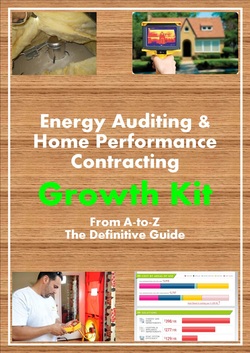- HOME
- HERS PRACTICE EXAMS
- NEWBIES
-
STUDY GUIDES
-
HERS RATER WRITTEN EXAM
>
-
Section 1 Building Science Fundamentals
>
-
1a. Basic Terms & Definitions
>
- 1. Airflow in Buildings
- 2. Equipment Efficiencies
- 3. Power and Energy
- 4. Effective Leakage Area
- 5. Area Weighted R-Value
- 6. Baseload / Seasonal Energy Use
- 7. Driving Forces (Including Natural and Mechanical)
- 8. Behavior of Radiation
- 9. Thermal Resistance / Transmittance: R and U Values
- 10. Latent / Sensible Heat
- 11. Total Equivalent Length
- 12. Dehumidification / Humidification
- 13. Convert Pressure Units
- 14. Thermal Bridges
- 15. Pressure Boundary
- 16. Stack Effect
- 17. Exfiltration and Infiltration
- 18. Natural / Mechanical Ventilation
- 19. Net Free Area
- 20. Input & Output Capacity
- 21. Peak Electrical Demand
- 22. Permeability and Perm Rating
- 23. Standby Loss
- 24. IAQ (indoor air quality): Moisture, CO, Dust
-
1b. Principals of Energy, Air & Moisture Thermodynamics
>
- 1. Thermodynamics: Conduction, Convection, Radiation, ΔT
- 2. Factors That Affect Insulation Performance
- 3. House Pressurization/Depressurization by Various Forces
- 4. Heat Gain / Loss
- 5. Power and Energy
- 6. Moisture Transport Mechanisms
- 7. Identify Areas of Highest Relative Humidity
- 8. Principles of Combustion
- 1c. Combustion Safety >
-
1a. Basic Terms & Definitions
>
-
Section 2 Buildings and Their Systems
>
-
2a. Building Components
>
- 1. Identify basic duct configurations and components
- 2. Identify Basic Hydronic Distribution Configurations and Components
- 3. Identify Basic Structural Components of Residential Construction
- 4. Thermal Boundaries and Insulation Applications
- 5. Basic Electrical Components and Safety Considerations
- 6. Basic Fuel Delivery Systems and Safety Considerations
- 7. Basic bulk water management components (drainage plumbing gutters sumps etc)
- 8. Vapor barriers/retarders
- 9. Radiant Barrier Principles and Installations
- 10. Understand Fenestration Types and Efficiencies
- 11. Understand Issues Involved With Basements, Crawlspaces, Slabs, Attics, Attached Garages, Interstitial Cavities, and Bypasses
- 12. Understand Issues Involved With Ventilation Equipment
- Understand Basic Heating / Cooling Equipment Components Controls and Operation
- Understand Basic DHW Equipment Components Controls and Operation
- Identify Common Mechanical Safety Controls
- Identify Insulation Types and R-Values
- Understand Various Mechanical Ventilation Equipment and Strategies: Spot, ERV, HRV
-
Conservation Strategies
>
- Appropriate Insulation Applications and Installation Based On Existing Conditions
- Opportunity for ENERGY STAR Lighting and Appliances
- Identify Duct Sealing Opportunities and Applications
- Understand Importance of Air Leakage Control and Remediation Procedures
- Blower Door-Guided Air Sealing Techniques
- Water Conservation Devices and Strategies
- Domestic Hot Water (DHW) Conservation Strategies
- Heating & Cooling Efficiency Applications
- Proper Use of Modeling to Determine Heating and Cooling Equipment Sizing and Appropriate Energy
- Understand the Use of Utility History Analysis in Conservation Strategies
- Appropriate Applications For Sealed Crawlspaces Basements and Attics
- Identify / Understand High Density Cellulose
- Appropriate Applications for Fenestration Upgrades Including Modification or Replacement
- Comprehensive Building Assessment Process >
-
Design Considerations
>
- Appropriate Insulation Applications Based On Existing Conditions
- Understand Fire Codes as Necessary to Apply Home Performance in a Code-Approved Manner
- Understand / Recognize Building Locations Where Opportunities for Retrofit Materials
- Understand Climate Specific Concerns
- Understand Indoor Environment Considerations for the Environmentally Sensitive
- Understand Impact of Building Orientation, Landscape Drainage, and Grading
- Opportunity Potential Renewable Energy Applications: Geothermal, Photovoltaic, Wind
- Understand Impact of Shading on Heating / Cooling Loads
- Awareness for Solar Gain Reduction / Solar Gain Opportunities
- Understand Need for Modeling Various Options For Efficiency Upgrades
-
2a. Building Components
>
-
Measurement & Verification of Building Performance
>
-
Measurement & Verification of Building Performance
>
- Air Leakage Test Results
- Understand Building Shell / Envelope Leakage
- Apply Fundamental Construction Mathematics and Unit Conversions
- Calculate Building Tightness Levels (Minimum Ventilation Requirements)
- Calculate Heating Degree Days and Cooling Degree Days
- Identify Proper Appliance and Combustion Appliance Venting
- Ventilation calculations and strategies
- Proper methods for identifying / testing fuel leaks
- Blower door setup, accurate measurement and interpretation of results
- Combustion Appliance Zone (CAZ): depressurization, spillage, draft, Carbon Monoxide (ambient and flue)
- Carbon Monoxide (CO) evaluation: ambient
- Proper applications and use of temperature measuring devices
- Pressure pan and room to room pressure diagnostics
- Recognize contributing factors to comfort problems
- Inspect for areas containing moisture or bulk water in undesirable locations
- Understand and inspect for basic electric safety (e.g. frayed wires, open boxes, etc)
-
Measurement & Verification of Building Performance
>
-
RESNET HERS RATER National Standards & Project Specifications
>
- Understand applicability content and intent of BPI National Standards – Do no harm, make buildings more healthy, comfortable, durable and energy efficient
- Recognize need for a professional local/state/national codes evaluation
- Be able to specify appropriate materials and processes needed for building performance projects
- Analyzing Buildings Systems >
- Conduct and Communications >
-
Section 1 Building Science Fundamentals
>
- HERS RATER FIELD EXAM >
- BLOWER DOOR TEST >
- RESNET STANDARDS >
-
HERS RATER WRITTEN EXAM
>
- ESSENTIALS
- AFTER THE EXAM
- NEWSLETTER



